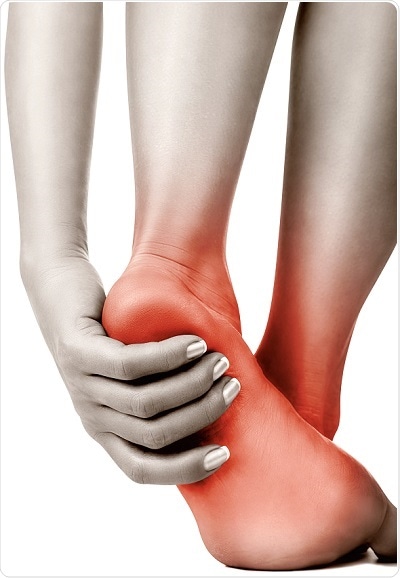The intense pain in the back of the foot results from inflammation in a broad ligament that connects the bone to the foot called the plantar fascia.

The ankle, heel, fingertips, connecting bones, tendons, ligaments, and muscles of the foot are there to support your body weight and give you range of motion. But when one of these tissues becomes inflamed, the result is almost always pain.
The plantar fascia is a thick band that resembles a “spring” connecting the bones of the foot, and it is one of the most important connectors in the feet. Inflammation in this area comes with intense pain, which is usually worst first thing in the morning when you take your first steps.
What causes plantar fasciitis?
Dancers, athletes, and those who stand all day long are more likely to suffer from foot pain, but plantar fasciitis can actually affect anyone. Plantar fasciitis happens when the plantar fascia becomes irritated or inflamed, which usually occurs as a result of standing too much, being overweight or obese, and in some cases, to long-distance runners and other athletes. Pregnant women also experience plantar fasciitis bouts sometimes.
What does plantar fasciitis feel like?
Most people feel pain reminiscent of a sharp burn, but some actually complain of dull pain. Generally, the pain starts in the heal when you flex your foot, but the worst pain tends to appear when you get up in the morning, and you take the first steps out of bed.
How common are heel spurs?
According to various studies, about 10 percent of people will experience “spurs” during their lives, with the most prone being between the ages of 40 to 55.
How is plantar fasciitis diagnosed?
Unlike other orthopedic problems, x-rays may not be able not to reveal the root cause of plantar fasciitis, as this is an inflammatory process in the ligament. Therefore, most of the diagnoses will be made through a physical examination where the doctor presses different points in the foot until he finds the exact location of the pain.
Is plantar fasciitis dangerous?
If local pain occurs with localized fever, hemorrhage, or the pain shoots up from your foot, you should seek medical examination to rule out other conditions.
How is plantar fasciitis treated? Is there any advanced instrumentation that can help?
As is the case with other orthopedic conditions, foot pain often improves with active rest. Active rest refers to moderate rest with continued activity while being mindful of your pain (and avoiding putting too much weight on your foot), instead of laying down and avoiding all movements. It is sometimes helpful to place cold compresses on the painful area several times a day.
In many cases, customized insoles will be beneficial because of their ability to reduce point loads. If your doctor sends you to physical therapy, you will learn a variety of muscle strengthening exercises.
There are cases where steroid injections are needed, and in extreme situations, surgery will be required (the effectiveness of which is controversial). Ignoring the problem can cause chronic inflammation and ongoing complications.
As a home treatment, it is highly recommended to use home appliances such as “Olynvolt™ Pocket,” which offers a combination of advanced pain relief technologies.
Treating plantar fasciitis with “Olynvolt™ Pocket”
Recommended treatment: 20 minutes one to two times daily.
The course of treatment:Continue for 15 minutes.
In most cases, 10-14 days significantly reduce plantar fasciitis pain.
How can I prevent plantar fasciitis in the future?
Muscle strengthening and stretching exercises both in the feet and in the calves have been found to be effective in relieving plantar fasciitis and in preventing it in the future.







